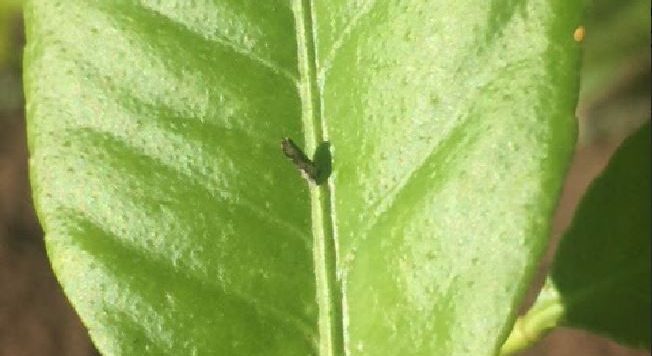
Citrus growers and industry members recently gathered virtually to discuss the Asian citrus psyllid (ACP) and huanglongbing disease (HLB) situation throughout the Central Valley of California. The reason for the concern is a negative trend seen in 2020.
ACP DETECTION HISTORY
ACPs, the vectors for the disease, are widespread in Southern California where HLB-infected trees have been found. There are ongoing efforts to suppress ACP populations with coordinated sprays and biological releases. A small mountain range that separates Southern California from the Central Valley south of Kern County acts as a natural barrier against the pest.
Madera, Fresno, Tulare, Kings and Kern counties make up the Central Valley region. In 2012, three psyllids were trapped in the valley. That number gradually increased to 13 in 2013, 17 in 2014 and then jumped to 130 in 2015. In 2016, numbers peaked to 379 trapped psyllids with a majority of those in Kern County, which is closest to the natural barrier.
The California Department of Food and Agriculture (CDFA), through it’s Citrus Pest & Disease Prevention Program (CPDPP), implemented a concerted effort to stop the accidental spread of the pest by transport and suppress any possible establishment of ACP populations with coordinated area-wide spray applications. In 2017, detection numbers dropped to 125. Just 31 and four psyllids were detected in 2018 and 2019, respectively.
NEGATIVE TREND IN 2020
Because of the low trapping numbers in 2019, the CPDPP cut back on area-wide treatments. However, higher detection numbers returned in 2020. There was a total of 118 psyllids identified last year. CPDPP Grower Liaison Judy Zaninovich has gotten some feedback from the industry on whether area-wide treatment and ACP detection are correlated. “I have gotten some questions on whether we maybe should have done a coordinated treatment in 2020 (in September), and maybe that would have stopped the increase,” she said in her presentation. “Let me tell you though that the majority of all the detections were in the month of October … My belief is that the majority of the detections are coming from the residential areas.”
Last year, 113 of the 118 finds were in Kern County. Zaninovich said ACP are almost always found in residential citrus or commercial citrus next to residential trees. She said that is what complicates the effectiveness of area-wide treatments. “We don’t regularly treat residential citrus. The program does not have the money to do that on a prophylactic basis. We can only treat once there are detections,” she said. “We are going to have these periodic increases, but our history shows us how we can bring them back down.”
PLANS FOR 2021
Most ACP detections in the Central Valley happen between September and November. Therefore, the San Joaquin Valley ACP/HLB Task Force of the CPDPP is not coordinating an area-wide treatment for spring. However, it is asking growers to consider treating all of their blocks with ACP-effective materials after petal fall. “It’s always a balance,” she said. “Yes, (a spring) coordinated treatment in 2020 might have lowered some of the numbers in commercial citrus, but a majority of the detections were in residential areas. We need to consider saving our material for when we need it the most.”
Instead, the task force is coordinating a late summer treatment in Kern County. Growers with blocks south and east of Bakersfield are being asked to treat sometime in August or September with soil-applied imidacloprid or Actara. This includes young citrus. The task force also is coordinating two organic treatments in organically grown citrus blocks during the same time.
Zaninovich gave growers general guidelines to help control the spread of ACP. Methods include practicing best management practices, monitoring correctly, using ACP-effective material, participation in coordinated treatment, treating block borders first and notifying local liaisons about abandoned groves.
She also addressed a new Kern County pest control program that is educating residents on the threat of HLB and asking them to voluntarily remove their trees.
Taylor Hillman, general manager of AgNet West, wrote this article.
Sponsored Content










